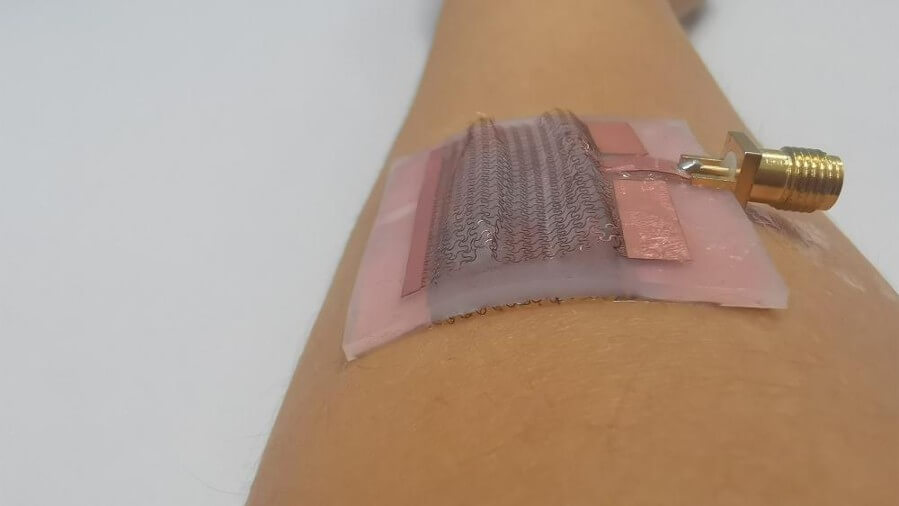To become truly wireless, wearable technology has one more cord to cut: the charger. A Penn State-led team made the first slash, using asymmetric copper arches to develop a 3D antenna system that wirelessly harvests radio frequency energy and converts it to electrical energy to power itself and on-board sensors.
The standalone system is made possible by the copper arches in the antenna, which use the wearer’s mechanical movements to “pop” into three dimensions and improve its reception and transmission abilities, according to principal investigator Huanyu “Larry” Cheng, assistant professor of engineering science and mechanics in the Penn State College of Engineering. The researchers detailed their work in Nano Energy.
“As the key component in wireless technology, antennas need to be stretchable to follow large human motions or natural skin deformations, but early stretchable antennas significantly decreased the ability to transmit as they were stretched,” Cheng said. “Our new stretchable 3D microstrip patch antenna can transmit energy and data at almost twice the rate and distance as its 2D counterpart.”
The patch antenna is not to be confused with the 3D dipole antenna Cheng’s team previously developed. Patch antennas use an electrically charged surface called a ground plane, which is placed directly under the sensor. It acts as a literal ground to help orient the sensor and compensate for how human tissue and sweat can dissipate electrical signals, giving the patch an advantage over dipole antennas, according to Cheng.
Cheng and his team previously developed a 3D patch antenna with symmetrical copper arches but found the sensing and transmission performance lackluster. By making the arches asymmetrical, the performance improved by double.
“The asymmetric design likely maximizes the benefits of a substrate that is silicone-based and partially removed: physical characteristics that can individually improve peak gain,” Cheng said.
Importantly, Cheng noted, the improved patch antenna can be paired with a flexible rectifier to create a rectenna, which can independently harvest and store energy to power the transmission system as well as the sensors. Though Cheng’s team previously paired a rectifier with a dipole antenna, the device’s performance degraded when placed on human skin. The new mechanism provides higher efficiency in converting radio frequency energy to usable power.

